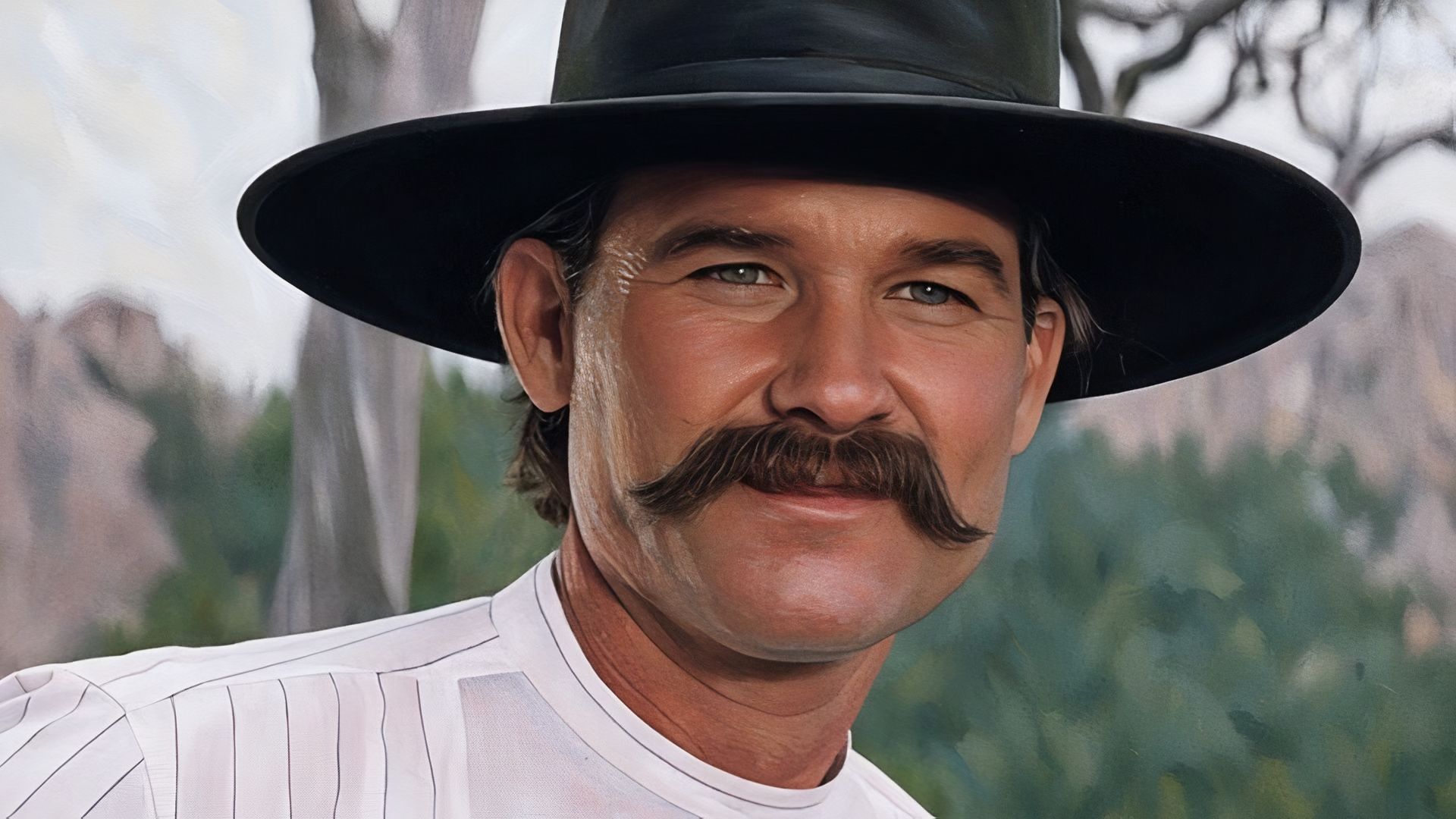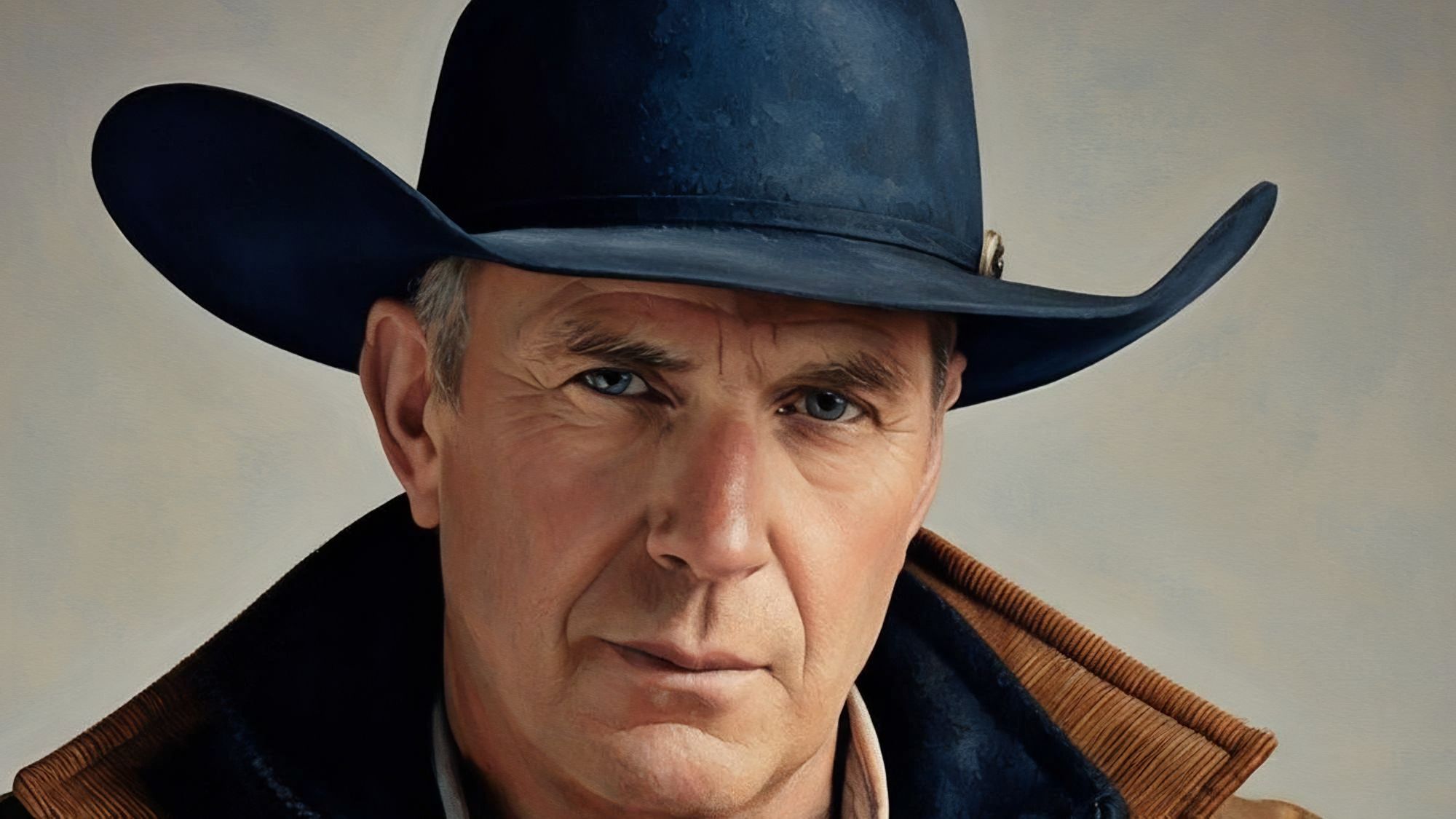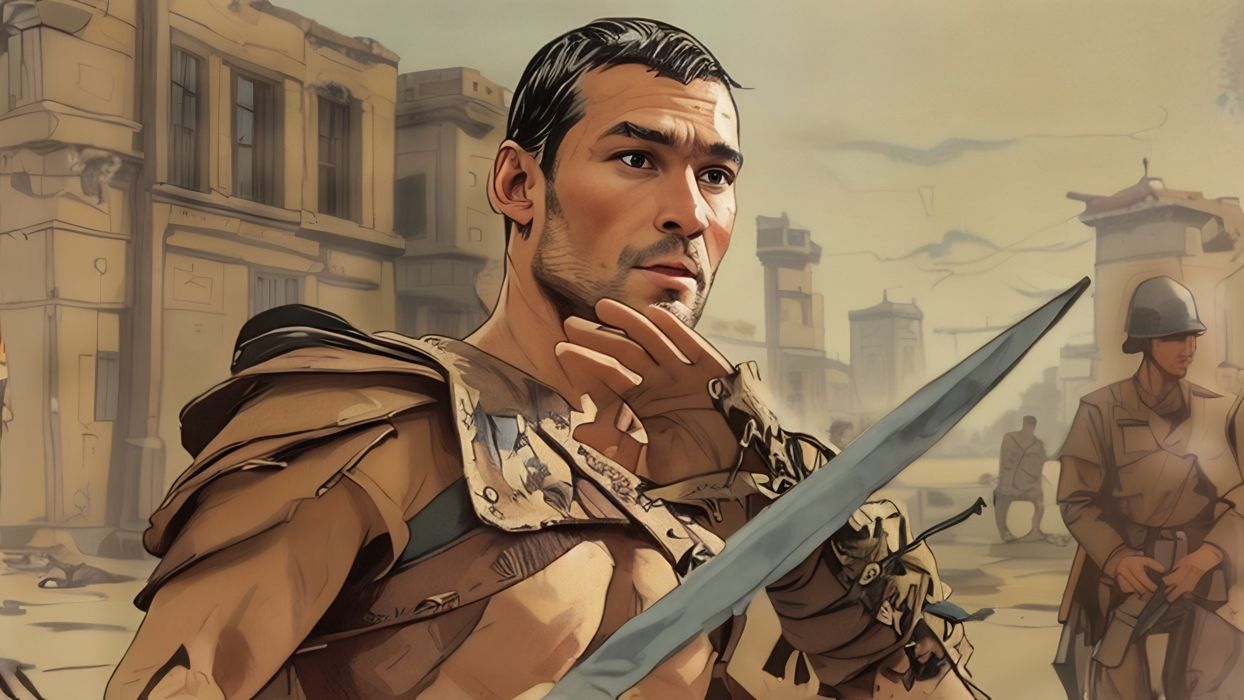Wyatt Earp’s legend didn’t just live in the dusty streets of Tombstone—it thrived on television screens across generations. With his signature hat, stoic expression, and unwavering sense of justice, Wyatt Earp became a symbol of frontier law in numerous TV adaptations. Whether portrayed in The Life and Legend of Wyatt Earp, Deadwood, or even reimagined in modern reinterpretations, Earp’s character has always represented the line between chaos and order in the Old West. But his appeal wasn’t just in quick draw shootouts or hardened grit—it was in the moral dilemmas he faced, the communities he protected, and the honor he carried through every showdown. These top 10 moments from various television portrayals highlight the very best of Wyatt Earp on screen—moments that turned a historical figure into an American TV myth.
#10: Holding the Line in Dodge City (The Life and Legend of Wyatt Earp, Season 1)
In the pilot of The Life and Legend of Wyatt Earp, Hugh O’Brian steps into the boots of the famed marshal with quiet authority. One of the earliest iconic scenes sees Earp arriving in Dodge City—a town overrun by outlaws and crooked influences—and immediately establishing a code of justice that’s equal parts tough and fair. He walks into a saloon, stares down a group of notorious gunmen, and tells them plainly: “There’s a new sheriff in town. And I don’t bluff.”
The simplicity of the moment is what makes it so striking. No gunfight, no big musical swell—just a steely gaze and complete control. The camera lingers on O’Brian’s face, letting the weight of the character’s legend sink in. What makes this moment, so heroic isn’t just the statement—it’s the restraint. Earp doesn’t need to draw his weapon to assert dominance. He lets his reputation and presence do the work.
This scene set the tone for the entire series and helped define how television would portray Western lawmen for decades to come. Earp’s blend of dignity and resolve helped audiences believe that one man could bring order to the Wild West—not through brute force, but through sheer force of will. It’s a moment that introduced Earp to TV history with the same commanding authority he supposedly held in real life.
#9: The Showdown at the Train Station (Wichita Town, guest appearance)
In a crossover guest spot on Wichita Town, Wyatt Earp—played once again by Hugh O’Brian—arrives to assist Marshal Matt Dillon’s spiritual predecessor in preventing an ambush at a local train station. The setup is classic Western tension: a prisoner is being transported, and a gang is waiting to intercept. As the train approaches and townspeople scatter, Earp calmly walks the platform, scouting the rooftops and alleyways.
The scene builds slowly. Earp doesn’t speak much, but every movement is calculated. When the ambush hits, he’s already anticipated it—using his position to outflank the gang and take them down without a single innocent bystander being harmed. It’s textbook Earp: tactical, composed, and morally grounded. He doesn’t shoot to kill unless absolutely necessary, and he makes it a point to disarm and disable rather than massacre.
This moment highlights the way television could blend historical reverence with compelling action. Earp isn’t portrayed as invincible, but as a man who’s been in enough shootouts to know how to survive them without turning into the very outlaw he’s fighting. The visual of him standing alone on the train platform—dust swirling, revolver low—is as Western as it gets. And it’s one of the finest examples of why Earp always stood apart from the rest: he didn’t just react to violence. He anticipated it, defused it, and made the West a little safer each time.
#8: Facing Down Doc Holliday’s Dark Side (The Life and Legend of Wyatt Earp, Season 3)
The bond between Wyatt Earp and Doc Holliday is the stuff of Western legend, but in this standout episode, that friendship is tested when Doc—battling illness and emotional torment—nearly crosses the line into outlaw behavior. After a heated card game spirals into a shooting, Earp finds himself in the unenviable position of having to confront his closest ally.
In one of the show’s most emotionally charged scenes, Earp visits Doc in his hotel room, where the gambler sits brooding with a bottle and a gun. Rather than coming in hot, Earp approaches with calmness, empathy, and firm conviction. He doesn’t lecture. He reminds Doc of who he is—not the gunslinger people fear, but the man who once stood by his side in a dozen battles for justice. “We’ve stood on the right side of the law too long to walk away from it now,” he says, eyes level.
It’s a masterclass in character-driven drama. The tension isn’t in whether they’ll draw—it’s in whether their friendship can hold under the weight of their respective demons. When Doc finally hands over his weapon and let’s go of the rage, it’s not just a personal win for Earp—it’s a win for everything he stands for.
This moment reflects a key piece of Wyatt Earp’s enduring appeal: he’s not just a man of action, but a man of principle. He lifts others up, even when they’re on the verge of falling—and that’s what makes him a true hero.
#7: Breaking Up a Corrupt Sheriff’s Ring (The Life and Legend of Wyatt Earp, Season 4, “The Big Bellyache”)
Wyatt Earp’s dedication to justice didn’t stop at dealing with outlaws—sometimes, his greatest challenges came from within the system. In this gripping episode, Earp uncovers a secret ring of lawmen who’ve been taking bribes from cattle thieves and pocketing bounty money while innocent men are framed for crimes they didn’t commit. The most painful part? One of the corrupt deputies used to be a close friend of Wyatt’s.
Earp doesn’t go in guns blazing—he plays a long game. He starts investigating quietly, following the money trail, interviewing townsfolk, and laying down subtle pressure. Slowly, the cracks in the ring begin to show. What’s most compelling here is how Earp balances legal strategy with emotional intelligence. He doesn’t just want to expose the ring—he wants the people of Dodge City to see that corruption has no place under his watch. His confrontation with the sheriff is a highlight of the series: calm, deadly serious, and morally unwavering.
In the final act, Earp tricks the corrupt officials into incriminating themselves by staging a fake deal with a decoy witness. When the truth comes out, he doesn’t gloat. He arrests them with sadness in his eyes, noting that justice comes with a heavy heart when it involves people you once trusted. It’s a powerful example of Earp’s integrity—he’s not in it for power or glory. He’s in it to keep the law clean, even when it means losing friends. This moment reminds us that the strongest heroes are those who do what’s right, even when it hurts the most.
#6: Outwitting a Bounty Hunter to Save an Innocent Man (The Life and Legend of Wyatt Earp, Season 2, “The Ne’er Do Well”)
When a greedy bounty hunter rolls into Dodge with a prisoner in chains, claiming he’s a wanted killer from another state, Wyatt smells something off. The supposed “criminal” is a soft-spoken drifter with no known record, and the bounty hunter is suspiciously aggressive about collecting the reward and leaving town before anyone asks too many questions.
Rather than confront him head-on, Wyatt conducts a stealth investigation behind the scenes. He contacts out-of-state lawmen, interviews witnesses who saw the drifter working at a local stable during the time of the alleged crime and sets a trap using the bounty hunter’s own arrogance against him. When the trap springs, the bounty hunter finds himself surrounded by citizens and deputies—presented with hard evidence of perjury, fraud, and unlawful arrest.
Wyatt’s handling of the situation is pitch perfect. He doesn’t just save the innocent man—he exposes a larger system of bounty abuse happening across county lines. His final words to the bounty hunter are cold but righteous: “You weren’t here for justice. You were here for profit. And in Dodge City, that makes you the criminal.”
This moment is a classic Western inversion: the man with the badge isn’t always the one upholding the law, and Wyatt Earp is always ready to remind people of that. It’s one of his finest examples of using intellect and patience instead of bullets—earning respect not through fear, but through fairness. Earp doesn’t just protect the town—he protects the spirit of justice itself.
#5: The Street Duel with Clay Allison (Dead Man’s Gun, guest portrayal)
Though not technically from The Life and Legend of Wyatt Earp, this later TV portrayal of Wyatt—grizzled and battle-worn—offers one of the most intense versions of the legendary lawman. In a special crossover episode of Dead Man’s Gun, Wyatt Earp is called to intervene when Clay Allison, a psychotic gunslinger known for his unpredictability and bloodlust, rides into town looking to make a name for himself.
The town is paralyzed with fear. Allison goads everyone, shoots a barkeep for fun, and challenges the local sheriff to a duel—killing him on the spot. Earp arrives just in time to keep the town from descending into total chaos. Rather than give Allison the duel he wants, Earp tries to de-escalate, offering him a chance to walk away. But Allison won’t be denied.
The tension builds until the inevitable standoff. As they face off in the street, the air is electric with dread. Wyatt waits… and waits… until Allison flinches. The gunfight lasts less than three seconds. Wyatt draws, fires once, and Allison crumples to the dirt. Wyatt doesn’t cheer. He doesn’t even speak. He simply holsters his weapon and walks away.
This moment is TV Western storytelling at its absolute best: silent, suspenseful, and morally loaded. Wyatt doesn’t kill to prove a point—he kills because it’s the only way to stop further death. It’s not triumph. It’s tragedy. But it’s also justice. And in that quiet aftermath, the legend of Wyatt Earp grows one heartbeat stronger.
#4: Standing Trial for Doing What’s Right (The Life and Legend of Wyatt Earp, Season 5, “The Court Martial of Wyatt Earp”)
One of the most powerful moments in Wyatt Earp’s television legacy comes not from a shootout or a standoff—but from a courtroom. In this intense episode, Wyatt is put on trial for the death of a cattle baron’s son during a raid gone wrong. Though the killing occurred in the line of duty, the rancher uses his political clout to accuse Earp of excessive force, triggering a dramatic trial that threatens to tarnish Wyatt’s career and reputation.
The episode strips away Earp’s authority and puts him in the unfamiliar role of defendant. But even without his badge or his gun, he stands tall. The courtroom scenes are packed with emotional testimony, townspeople taking sides, and flashbacks that reveal the chaos of the moment in question. Wyatt refuses to lie, spin the story, or paint himself as a hero. He tells the truth—calmly, firmly, and with complete acceptance of the consequences.
What makes this moment shine is Wyatt’s belief that justice must work both ways—even when it’s aimed at him. He doesn’t pull favors. He doesn’t intimidate. He simply asks that the law be allowed to function fairly. When the jury ultimately finds him not guilty, it feels earned not because he’s a hero, but because he proved he was willing to face the same law he upholds for others.
It’s a moment of deep character integrity. Wyatt’s willingness to be judged, even falsely, highlights that his strength comes not just from his gun, but from his unwavering principles. In a genre filled with vengeance, this is justice at its finest.
#3: Mentoring a Young Gunman Toward a Better Path (The Life and Legend of Wyatt Earp, Season 6, “Tommy Behind the Badge”)
In this episode, a young drifter named Tommy arrives in Dodge City with a chip on his shoulder and a quick draw he’s not afraid to use. Inspired by stories of infamous gunfighters, Tommy seems destined to become another name on a tombstone. But Wyatt sees something more in the boy—something worth saving.
Instead of challenging him, Wyatt offers the young man a job assisting the marshal’s office, hoping to teach him that law enforcement isn’t about glory—it’s about responsibility. As the episode unfolds, Tommy wrestles with the temptation of the outlaw life versus the discipline required to protect others. Wyatt becomes a father figure, guiding him not with lectures but through example—showing restraint in confrontation, compassion for victims, and courage without cruelty.
In the episode’s final act, Tommy faces a choice: help Wyatt bring in a fugitive alive or take the easy path and shoot to kill. When Tommy chooses mercy, Wyatt nods silently, proud but knowing the boy’s journey has only begun.
This moment encapsulates one of Earp’s most heroic qualities—his ability to shape the future by inspiring others. He doesn’t just protect people in the moment; he tries to build a better tomorrow. Guiding someone away from the gunfighter’s path and toward the badge is no small feat. In doing so, Wyatt leaves a legacy that extends far beyond his own legend.
#2: The Gunfight at the O.K. Corral (The Life and Legend of Wyatt Earp, Season 6, “Wyatt Earp Comes to Tombstone”)
No list of Wyatt Earp moments would be complete without the most iconic shootout in Western history. In this dramatized retelling of the infamous Gunfight at the O.K. Corral, television brings to life the moment when Wyatt, his brothers, and Doc Holliday squared off against the Clantons and McLaurys in Tombstone.
The tension simmers as the sides line up in a narrow alley behind the corral. Earp issues warnings, giving the outlaws every chance to back down. But when they reach for their guns, the air erupts with thunder. The sequence is gritty, tightly choreographed, and true to Earp’s style—direct, purposeful, and controlled. He moves methodically, protecting his brothers and keeping Doc Holliday from going too far.
What makes this version of the shootout particularly impactful is its emotional gravity. The violence isn’t glorified—it’s portrayed as tragic and inevitable. Wyatt’s expression isn’t triumphant. It’s grim. He knows the cost of this confrontation, and he’ll carry it long after the smoke clears.
This moment is legendary for good reason. It’s the crystallization of the Wyatt Earp myth: a lawman who stood for justice against overwhelming lawlessness. And while many shows and movies have portrayed the event, The Life and Legend of Wyatt Earp gives it emotional weight that lingers long after the bullets stop flying.
#1: Hanging Up the Badge (The Life and Legend of Wyatt Earp, Series Finale, “The Frontier’s End”)
In the emotional final episode of The Life and Legend of Wyatt Earp, the marshal who held Dodge and Tombstone together finally decides to step away from the law. After decades of gunfights, personal loss, and standing alone in the face of chaos, Earp realizes it’s time to pass the torch. The West is changing. The frontier is closing. And even legends need rest.
There’s no dramatic final duel. No grand retirement party. Just a quiet, reflective Earp riding into the hills after turning in his badge and shaking hands with the new marshal. He’s older, slower, and more thoughtful, but still carries the same steely gaze that made him a symbol of justice.
In one final conversation with Doc Holliday, Wyatt says, “It’s not the badge that makes the law—it’s the man willing to wear it for the right reasons.” And with that, he leaves behind not just a job, but a legacy.
This scene is the perfect capstone to Earp’s heroic arc. It shows that true strength sometimes means letting go—not because you’re finished, but because your job is done. It’s a quiet, powerful moment that reminds us why Wyatt Earp became a legend—not just for the battles he fought, but for the peace he left behind.
From Dodge City to Tombstone, from back-alley standoffs to quiet conversations of principle, Wyatt Earp’s TV portrayals have offered a portrait of justice that transcends time. These moments reveal a hero forged not by glory, but by grit—a man whose legend lives on not just in his fast draw, but in his unbreakable code. Whether standing alone on a dusty street or walking away into the sunset, Wyatt Earp’s television legacy continues to remind us that doing the right thing often means doing it the hard way—and doing it anyway.




